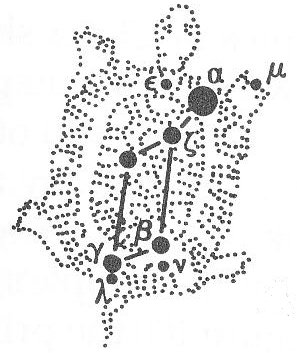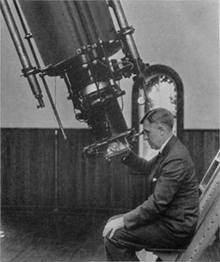 |
| Image Julius Staal, The New Patterns in the Sky: Myths and Legends of the Stars (1996), p.185 |
Why a turtle?
The star is called Sulafat from the Arabic السلحفاة al-sulḥafāt "turtle".
Aratos (?) called Lyra Khelus olige, the Little Tortoise or Shell; Greek Khelus is equivalent to the Latin word Chelys (olige from Greek oligos, meaning 'little'). The chelys or lyre is a stringed musical instrument which had a vaulted back of tortoise-shell, or of wood shaped like that shell.
The word cizelys was used in allusion to the oldest lyre of the Greeks which was said to have been invented by Hermes. According to tradition he was attracted by sounds of music while walking on the banks of the Nile, and found they proceeded from the shell of a tortoise across which were stretched tendons which the wind had set in vibration (Homeric Hymn to Hermes, 475 I).
Pausanias says that it was in Khelydorea ('rich in Tortoises') adjoining Mount Kyllene, in Arcadia, that Hermes is said to have found a tortoise and made the lyre. Pausanias, Description of Greece 8. 17. 5.
Constellations of Words
By the way, ancient Greeks had wonderful explanations to everything unusual. The amusing fable by Aesop explains the curiously built slow turtle always carrying the heavy shell with it:
Zeus invited all the animals to his wedding. The tortoise alone was absent, and Zeus did not know why, so he asked the tortoise (khelone) her reason for not having come to the feast. The tortoise said, "Be it ever so humble, there's no place like home." Zeus got angry at the tortoise and ordered her to carry her house with her wherever she went.
Aesop Fables 508
Description .
Parallax measurements yield an estimated distance of 620 light-years from the Earth.
This is a giant star with a stellar classification of B9 III indicating it has exhausted the supply of hydrogen at its core and evolved away from the main sequence.
The effective temperature of the outer envelope of this star is 10,080 K giving it the blue-white hue typical of a B-type star.
The interferometry-measured angular diameter of this star is 0.74 ± 0.10 mas which, at its estimated distance, equates to a physical radius of roughly 15 times the radius of the Sun.
Wikipedia
Single star
 |
| Samuel Alfred Mitchell (1874-1960) studied solar eclipses and set up a program to use photographic techniques to determine the distance to stars at McCormick Observatory, where he served as the director Image Wikimedia |
In 1909, Canadian astronomer Samuel A. Mitchell identified this star as a spectroscopic binary, although he was unable to split the absorption lines of the components. He found that a period of 25.6 days matched his measurements. It was reported as a spectroscopic binary as recently as 2001, but is now believed to be a single star with a high rate of rotation for stars of this type.
Wikipedia
No comments:
Post a Comment